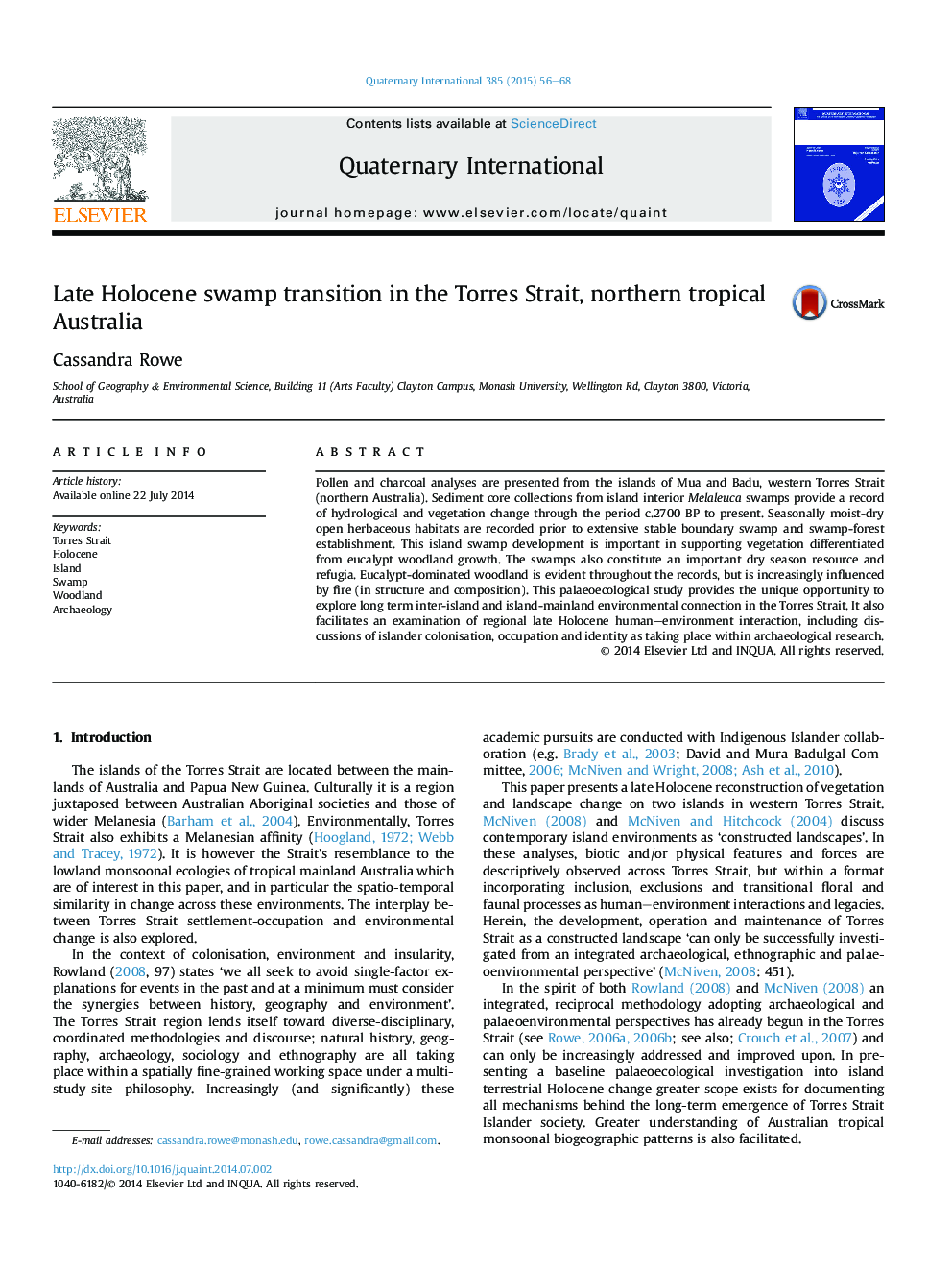| Article ID | Journal | Published Year | Pages | File Type |
|---|---|---|---|---|
| 1040430 | Quaternary International | 2015 | 13 Pages |
Pollen and charcoal analyses are presented from the islands of Mua and Badu, western Torres Strait (northern Australia). Sediment core collections from island interior Melaleuca swamps provide a record of hydrological and vegetation change through the period c.2700 BP to present. Seasonally moist-dry open herbaceous habitats are recorded prior to extensive stable boundary swamp and swamp-forest establishment. This island swamp development is important in supporting vegetation differentiated from eucalypt woodland growth. The swamps also constitute an important dry season resource and refugia. Eucalypt-dominated woodland is evident throughout the records, but is increasingly influenced by fire (in structure and composition). This palaeoecological study provides the unique opportunity to explore long term inter-island and island-mainland environmental connection in the Torres Strait. It also facilitates an examination of regional late Holocene human–environment interaction, including discussions of islander colonisation, occupation and identity as taking place within archaeological research.
